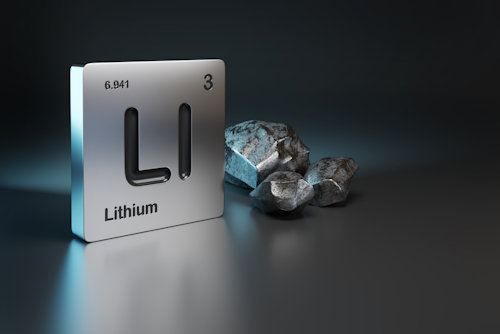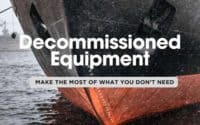The No Nonsense Guide to Maritime Energy Storage Systems (ESS)

Let’s dive into the world of marine energy storage systems – think of them as the beefy power banks keeping your ship’s vital operations running smoothly. These systems come in a few different flavors:
- Lithium-Ion Batteries: These are the cool kids on the block, known for their high energy density and lightweight charm. They’re like the sprinters of energy storage, delivering quick bursts of power when your ship needs it most.
- Fuel Cells: These guys are a bit like magicians, turning hydrogen into electricity with only water and heat as by-products. It’s a neat trick that could one day propel us into a cleaner maritime future.
- Advanced Lead-Acid Batteries: The trusty workhorses. They’ve been around for a while, but don’t let their age fool you – they’ve gotten some serious upgrades over the years.
These systems are crucial because, out there on the open sea, you need reliable power around the clock, and that’s exactly what they’re designed to provide.
* Please send feedback/suggestions to editor @ shipuniverse.com
Benefits for Maritime Use
Now, why would you want to kit out your vessel with one of these systems? For starters, ships are thirsty creatures that guzzle fuel like there’s no tomorrow. Energy storage systems can help quench that thirst more efficiently, which means you’re looking at saving some serious coin on fuel costs.
Also, let’s not forget about the environment. Reducing emissions isn’t just good for Mother Nature; it’s becoming a must-do with all the new regulations. By cutting down on fuel consumption, you’re also dialing back on those nasty emissions – it’s a win-win.
There’s also the matter of load management. Ships have all sorts of power needs, and sometimes the demand can spike unexpectedly. Energy storage can step in to smooth out these peaks, ensuring that everything keeps running without a hitch.
And, of course, we all want our voyages to be as safe as can be, right? This is where redundancy comes in. Having a solid energy storage system means you’ve got a reliable backup, just in case your main power sources decide to take an unplanned break.
Current Trends and Innovations
The marine energy storage scene is buzzing with innovation. We’re seeing systems getting smarter, more compact, and even more energy-efficient. Think about the tech in your smartphone – how it’s way more powerful than the clunky cell phones of yesteryear. Well, marine energy storage tech is on a similar turbo-charged journey.
There’s also a lot of chatter about hybrid systems, where energy storage works hand-in-hand with traditional fuels to create a kind of dynamic duo of power generation. These setups aim to optimize energy use and reduce environmental impact, making them a pretty hot topic in marine circles.
And keep your eyes on the horizon for the next wave of advances, because with the pace things are moving, the future of marine energy storage looks as exciting as a mystery novel – minus the cliffhangers, hopefully!
Cost-Benefit Analysis
Diving into the Financial Deep End
Assessing Financial Implications
Before you dive headfirst into the energy storage pool, you’ll want to know how deep the water is – financially speaking, that is. Investing in energy storage is like mapping a new route; you need to chart the costs from all angles. This includes the sticker price of the system, the crew you’ll need to install it (because it’s not a DIY project), and the running costs, like maintenance and operation. Think of this as the total ‘cost of ownership’, and it’s your map to uncharted savings in the long run.
The Treasure Map to ROI
Return on Investment (ROI)
Here’s the part where we talk treasure – the ROI. It’s the X marks the spot on your financial treasure map. Cutting down on fuel use is like finding a chest of doubloons. And those emission-cutting, planet-saving measures you’ll take? They could qualify your ship for discounts at eco-conscious ports or even generate revenue through demand response programs. It’s like having a renewable resource right on board that pays you back. Pretty nifty, right?
Hypothetical Cost Savings Example
** Disclaimer **
Actual figures in your specific location and circumstance can vary greatly.
Initial Scenario:
- Ship Details: Medium-sized cargo vessel, consuming 20,000 liters of diesel per day.
- Fuel Cost: Diesel price approx. $1.00 per liter.
- Daily Fuel Cost: 20,000 liters x $1.00/liter = $20,000/day.
- Annual Fuel Cost: $20,000/day x 250 operating days/year = $5,000,000/year (assuming 250 operating days).
Intervention:
- Investment in ESS: The ship invests in a lithium-ion battery energy storage system that costs $2,000,000.
- Installation Costs: Including downtime and labor, let’s estimate $500,000.
- Total Initial Investment: $2,500,000.
Operating With ESS:
- Fuel Savings: The ESS improves efficiency and reduces the ship’s diesel consumption by 15%.
- New Daily Fuel Cost: 20,000 liters x (1 – 0.15) x $1.00/liter = $17,000/day.
- Annual Fuel Cost with ESS: $17,000/day x 250 operating days/year = $4,250,000/year.
- Annual Fuel Savings: $5,000,000 – $4,250,000 = $750,000/year.
Additional Savings:
- Maintenance Cost Reduction: Due to less wear and tear on the main engine, let’s estimate a 10% reduction in annual maintenance costs.
- Initial Annual Maintenance Cost: $300,000/year.
- New Annual Maintenance Cost: $300,000 x (1 – 0.10) = $270,000/year.
- Annual Maintenance Savings: $300,000 – $270,000 = $30,000/year.
Payback Period:
- Total Annual Savings: $750,000 (fuel) + $30,000 (maintenance) = $780,000/year.
- Payback Period: $2,500,000 (initial investment) / $780,000 (annual savings) ≈ 3.2 years.
Long-term Benefits:
After the payback period, the ship continues to save on operational costs, amounting to significant savings over the lifespan of the ESS. In addition, the ship may benefit from improved market positioning by meeting green shipping standards and possibly earning carbon credits or qualifying for environmental incentives.
Click here to find your Ideal ESS
Integration and Installation
Setting the Stage for Shipshape Integration
Technical Requirements
Okay, captains and crew, let’s get technical but keep it casual. Before we can get those energy storage systems (ESS) humming along with your ship’s heartbeat, there’s a bit of prep work to do. It’s like getting ready for a gala – you want everything to fit just right.
First off, space on a ship is as precious as a sunny day at sea, so we’ve got to ensure there’s room for the new gear without tripping over it. Then, there’s the power dance – making sure the ESS can tango with the existing electrical setup. We’re talking compatibility with your generators, distribution panels, and all those other bits and bobs that keep the lights on and the motors running.
And don’t forget, this isn’t a one-size-fits-all hat; it needs to be tailored. So, we’ll need the right specs – voltage, capacity, even the temperature ranges your ESS will face when cruising tropical paradises or braving icy waters.
The Nautical Roadmap to Installation
Installation Process
Roll up your sleeves; it’s time to break down the installation journey into bite-sized steps:
- Planning: Grab your ship’s blueprints and a cup of your finest coffee. Sketch out where and how the ESS will fit into your vessel, and plan for the least disruption to your daily operations.
- Gathering the Crew: You wouldn’t set sail without a trusty crew, and installation is no different. You’ll need a team of skilled electricians, engineers, and maybe a wizard – also known as a marine systems integrator.
- The Big Fit: This is where the ESS is put into its new home. It’s all hands on deck, ensuring everything is bolted down, wired up, and looking shipshape.
- Testing the Waters: Now it’s time to flip the switch (figuratively, please) and test the system. This isn’t just a quick ‘on and off’ – it’s a thorough check to ensure everything is running as smooth as calm seas.
- Commissioning: Here’s where you give the system a final nod of approval. If all the dials are pointing in the right direction and the lights are blinking as they should, you’re good to go.
Steering Through Safe Waters
Safety and Best Practices
Safety is the name of the game in the world of maritime energy. It’s like wearing a life jacket – non-negotiable. So, when you’re installing your ESS, you’ve got to stick to the safety script. This means:
- Following the Codes: There are more acronyms in safety codes than fish in the sea – IMO, SOLAS, NEC – but they’re all there to keep you safe. Make sure you’re up to speed with the latest regulations.
- Training: Just like you wouldn’t hand over the helm to a landlubber, don’t let anyone near your ESS without proper training.
- Emergency Drills: Run through emergency scenarios as if they’re real. Knowing what to do in a crisis is half the battle won.
- Maintenance Matters: Keep a regular maintenance schedule, and treat your ESS like the precious cargo it is. A well-looked-after system is a safe one.
Maintenance, Regulation, and Compliance
Keeping the Ship in Shipshape
Maintenance Strategies
Alright, sea captains, let’s talk about keeping your energy storage system (ESS) running as smoothly as a calm sea. Maintenance is like regular deck swabbing – it’s essential, and skipping it is asking for trouble.
- Routine Check-Ups: Schedule regular check-ups for your ESS, just like you would a visit to the doctor. This includes checking connections, monitoring battery health, and ensuring software updates are applied.
- Troubleshooting Tips: Keep a handy guide for common issues. It’s like having a map when you’re navigating tricky waters. For instance, if you notice any unusual battery discharge patterns, it could be time for a health check.
- Long-Term Care: Treat your ESS like a valued member of the crew. Long-term care involves regular cleaning, ensuring ventilation systems are clear (batteries don’t like getting hot under the collar), and keeping an eye on the battery management system.
Navigating the Regulatory Seas
Regulatory Framework
Sailing through the seas of regulation can be as complex as navigating the Straits of Magellan. Here’s a quick compass to guide you:
- International Maritime Organization (IMO): They’re like the captains of maritime regulation. Stay updated with their guidelines, especially those related to safety and environmental standards for ESS.
- Local and International Standards: Depending on where you sail, you might encounter different regulations – think of these as the local maritime traffic rules. It’s crucial to stay compliant, whether it’s the EU, USCG, or others.
Smooth Sailing Through Inspections
Preparing for Inspections and Surveys
Inspections and surveys are like maritime pop quizzes; you’ve got to be ready at all times. Here’s how to ace them:
- Documentation: Keep all your paperwork in order. This includes installation reports, maintenance records, and compliance certificates.
- Mock Drills: Conduct regular drills and inspections on your own. It’s like a rehearsal dinner before the big banquet – it prepares you for the actual event.
- Up-to-Date Systems: Ensure your ESS and all associated safety systems are updated and fully functional. It’s the equivalent of making sure all lifeboats are shipshape and ready to go.
Charting the Course Ahead
Conclusion and Next Steps
So, there you have it – your captain’s guide to upgrading your fleet with the latest energy storage solutions. Remember, it’s a journey of smart planning, safe sailing, and staying in tune with the tides of technology and regulation.
Your action steps? Start by evaluating your current power needs, then dive into exploring the best ESS options for your vessels. Keep maintenance, safety, and regulations as your guiding stars, and you’ll be on your way to a fleet that’s not just efficient and compliant, but also future-ready.
As you set sail on this energy storage adventure, remember that it’s not just about keeping up with the maritime Joneses; it’s about charting a course towards a more efficient, sustainable, and profitable horizon. Happy sailing!

Do you have a Maritime Product or Service that may be of interest to Shipowners? Tell us about it here!
Do you have feedback or insights? Please reach out to editor @ shipuniverse.com



